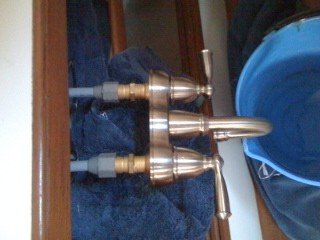rusbet
Veteran Member
- Joined
- Oct 1, 2010
- Messages
- 63
We are in the process of replacing the galley and head faucets on our 1986 Monk.*
The galley refit doesn't leak but it took teflon tape and another go at tighening it up before it was completely dry.*
Today we could not get the faucet in our stateroom head to quit leaking.* One issue might be that the supply line connection is worn.* We don't see the other end of the supply line - we assume it connects to the water tank.* The line is grey and from what we can tell it just fits into the metal support of the faucet, and then we tighten up the plastic nut that is part of the supply line.* Has anyone replaced just the plastic nut?* Are the supply lines suppose to be replaced when installing new faucets.
The galley refit doesn't leak but it took teflon tape and another go at tighening it up before it was completely dry.*
Today we could not get the faucet in our stateroom head to quit leaking.* One issue might be that the supply line connection is worn.* We don't see the other end of the supply line - we assume it connects to the water tank.* The line is grey and from what we can tell it just fits into the metal support of the faucet, and then we tighten up the plastic nut that is part of the supply line.* Has anyone replaced just the plastic nut?* Are the supply lines suppose to be replaced when installing new faucets.

